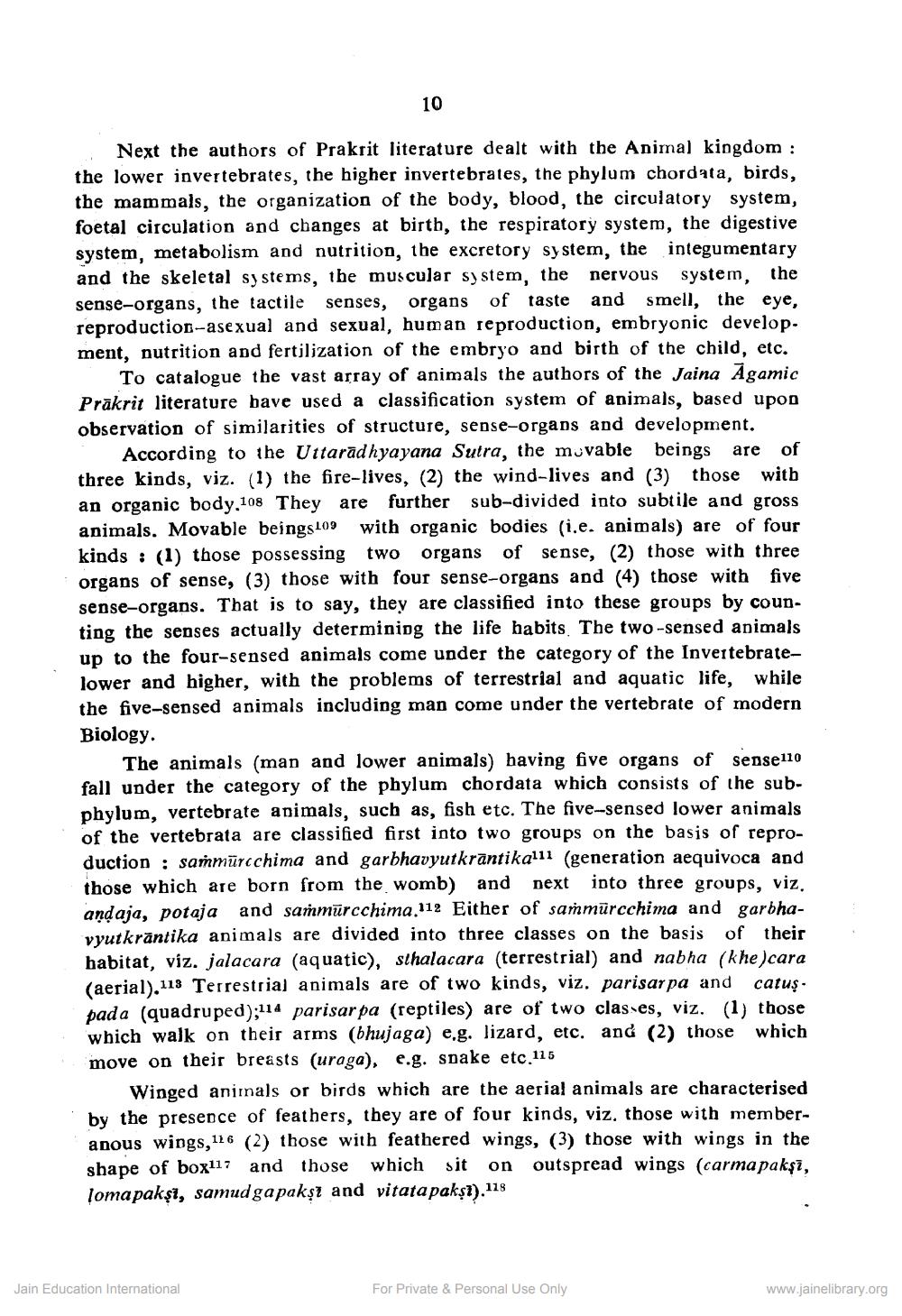________________
10
Next the authors of Prakrit literature dealt with the Animal kingdom : the lower invertebrates, the higher invertebrates, the phylum Chordata, birds, the mammals, the organization of the body, blood, the circulatory system, foetal circulation and changes at birth, the respiratory system, the digestive system, metabolism and nutrition, the excretory system, the integumentary and the skeletal systems, the muscular system, the nervous system, the sense-organs, the tactile senses, organs of taste and smell, the eye, reproduction-asexual and sexual, human reproduction, embryonic develop. ment, nutrition and fertilization of the embryo and birth of the child, etc.
To catalogue the vast array of animals the authors of the Jaina Agamic Prākrit literature bave used a classification system of animals, based upon observation of similarities of structure, sense-organs and development.
According to the Uttarādhyayana Sutra, the movable beings are of three kinds, viz. (1) the fire-lives, (2) the wind-lives and (3) those with an organic body.108 They are further sub-divided into subtile and gross animals. Movable beings.09 with organic bodies (i.e. animals) are of four kinds : (1) those possessing two organs of sense, (2) those with three organs of sense, (3) those with four sense-organs and (4) those with five sense-organs. That is to say, they are classified into these groups by counting the senses actually determining the life habits. The two-sensed animals up to the four-sensed animals come under the category of the Invertebratelower and higher, with the problems of terrestrial and aquatic life, while the five-sensed animals including man come under the vertebrate of modern Biology.
The animals (man and lower animals) having five organs of sense110 fall under the category of the phylum chordata which consists of the subphylum, vertebrate animals, such as, fish etc. The five--sensed lower animals of the vertebrata are classified first into two groups on the basis of reproduction : sammūrochima and garbhavyutkrāntikalit (generation aequivoca and those which are born from the womb) and Dext into three groups, viz. andaja, potaja and sammūrcchima.112 Either of sammūrochima and garbhavyutkrāntika animals are divided into three classes on the basis of their habitat, viz. jalacara (aquatic), sthalacara (terrestrial) and nabha (khe)cara (aerial).113 Terrestrial animals are of two kinds, viz. parisar pa and catus. pada (quadruped);114 parisar pa (reptiles) are of two classes, viz. (1) those which walk on their arms (bhujaga) e.g. lizard, etc. and (2) those which move on their breasts (uraga), e.g. spake etc. 115
Winged animals or birds which are the aerial animals are characterised by the presence of feathers, they are of four kinds, viz. those with memberanous wings, 116 (2) those with feathered wings, (3) those with wings in the shape of boxl1; and those which sit on outspread wings (carma pakṣī, loma pakși, samud gapakşi and vitata pakşi).118
Jain Education International
For Private & Personal Use Only
www.jainelibrary.org




